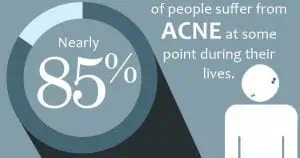
If you have noticed red bumps on your arms and thighs, which tend to become more prominent or itchy when your skin is dry, your first thought is likely that you have a form of acne. This assumption likely isn’t too far off base: nearly 85% of people suffer from acne at some point during their lives, including an estimated 40 million to 50 million Americans. However, if you visit a dermatologist clinic seeking an official diagnosis or acne treatment products, you may discover that your condition isn’t acne at all.
Instead, you likely have a common problem called keratosis pilaris, which affects nearly 40% of people in varying degrees and tends to run in families. Unfortunately, while scientific research has lead to a number of effective therapies and techniques to treat acne, even the best dermatologists have been unable to correct keratosis pilaris. However, there may be good news: recent research has found a treatment that may successfully reduce some symptoms of this common condition.
Previous studies have shown that keratosis pilaris is resistant to most treatments, and while shorter wavelength laser treatments can treat the erythema (or redness) associated with the treatments, it has no effect on the skin’s texture. Because of this, a research team decided to test the effectiveness of a longer wavelength 810-nm diode laser. The researchers recruited 23 patients with keratosis pilaris on both of their arms and Fitzpatrick skin types I to III, defined as light skin tones that tend to burn instead of tanning. The trial lasted from March to October 2011, with a total of three treatment visits for each participant. Each patient only received treatment on one arm.
At the end of the seven month trial, 18 participants had completed the study, while three were unavailable for follow-up appointments and another three had withdrawn due to inflammatory hyperpigmentation. When these 18 participants were examined by dermatologist 12 weeks after the initial visit in a blind review, the doctors found that the treatment had resulted in significant improvements in skin texture. However, the treatment had no effect on the patients’ erythema. In a study published in the November issue of JAMA Dermatology, the research team suggested that the longer wavelength treatment could be supplemented with other laser treatments and products to treat both symptoms. Could this therapy be used to address your keratosis pilaris? Contact the best dermatologist in your area today to find out.





